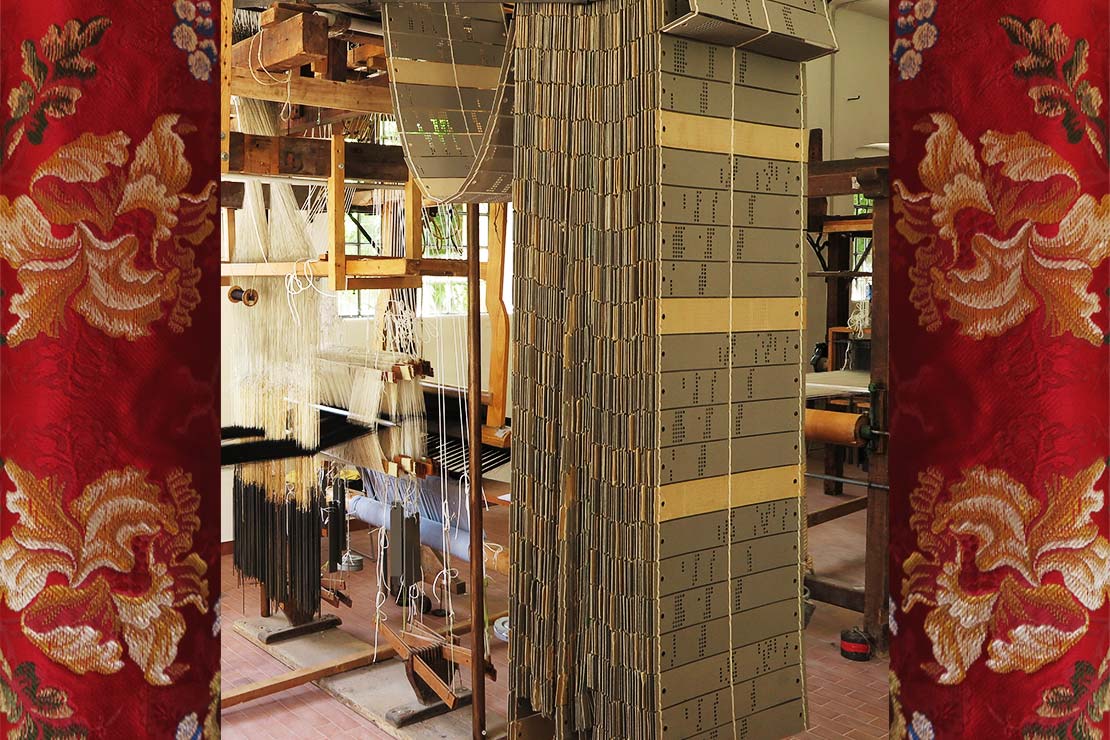Only a very few of these looms are still in existence:
- at least one is in China, considered a Cultural Heritage of Humanity
- at least one is in Florence at the Fondazione Lisio
- at least one is at Tessitura Bevilacqua in Venice
- one was acquired by Serica 1870 for its headquarters in Follina.
Why?
The arrival of Pope Francis led to Franciscan-style cuts in the budget for luxury and opulent items. Hence, the textile factory Tessitura Pagliero di Cuneo, which had long supplied the Vatican with textiles for paraments and vestments, started experiencing financial difficulties.
The loom was slated to be taken out of service, disassembled and sold to a replacement parts dealer.
The loom is used to produce authentic brocade, which mechanical looms can imitate but not replicate. Its daily production yield is 15/20 cm, but a single meter of its 50 cm wide fabric, sometimes interwoven with pure gold and silver threads, is worth between 1,000 and 3,000 Euro.
Why would anyone need these fabrics?
Over the centuries, they served as symbols of the highest callings, from the divine incarnate to reigning supremacy.
To this day, whenever it needs to replace textile wall coverings or reupholster chairs, the Superintendence of Fine Arts demands hand-woven fabrics, as if the difference in itself certifies their worth.
And that's also why accessories, bustiers, garments and jackets made with authentic brocade are so incomparably precious.
Today, very few people know how to assemble and operate this rare loom. The Follina company is already on the look-out for the few weavers capable of teaching and handing down this precious knowledge to the next generation.
This, too, is what Serica 1870 is about.



